How to Cook Perfect Brown Rice on the Stove
Updated Dec 09, 2025
This post may contain affiliate links. Please read our disclosure policy.
This brown rice recipe is foolproof! Learn the perfect ratio of water to rice, how long to cook it, and how get perfectly fluffy rice every time.
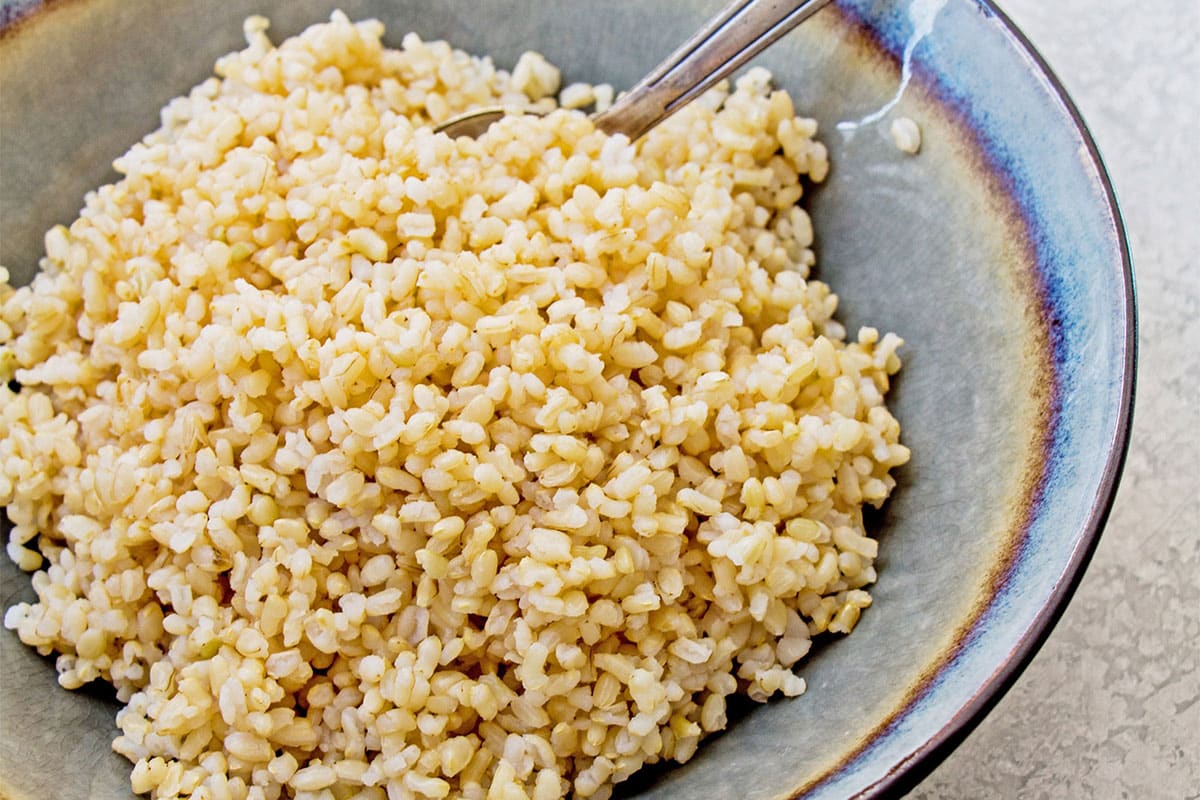
When cooked well, brown rice is absolutely delicious. Firm, fluffy, toothsome, with a nutty flavor, and chock-full of some nice health benefits (lots of fiber and nutrients). Badly cooked brown rice can be dense or mushy, but this recipe will result in plump, chewy little separate grains with loads of flavor and great texture.
I like to cook rice in broth to bump up the flavor a bit, though I often dilute the broth with some water so as not to overpower the delicate flavor of the rice. You can cook and use brown rice much the same way you use white rice; just know that it has a longer cooking time.
I love swapping in brown rice for white rice, and clearly so do many of you! It’s versatile side, and a perfect base for rice bowls and stir-fries.
By signing up, you agree to our Privacy Policy.
“YEESSSS, finally brown rice that isn’t a mushy and still watery mess!!!! This came out perfectly, good texture and nice flavor. Thank you so much for this recipe, I’d almost given up on cooking brown rice on the stove!” – Natalie
What's In This Post?
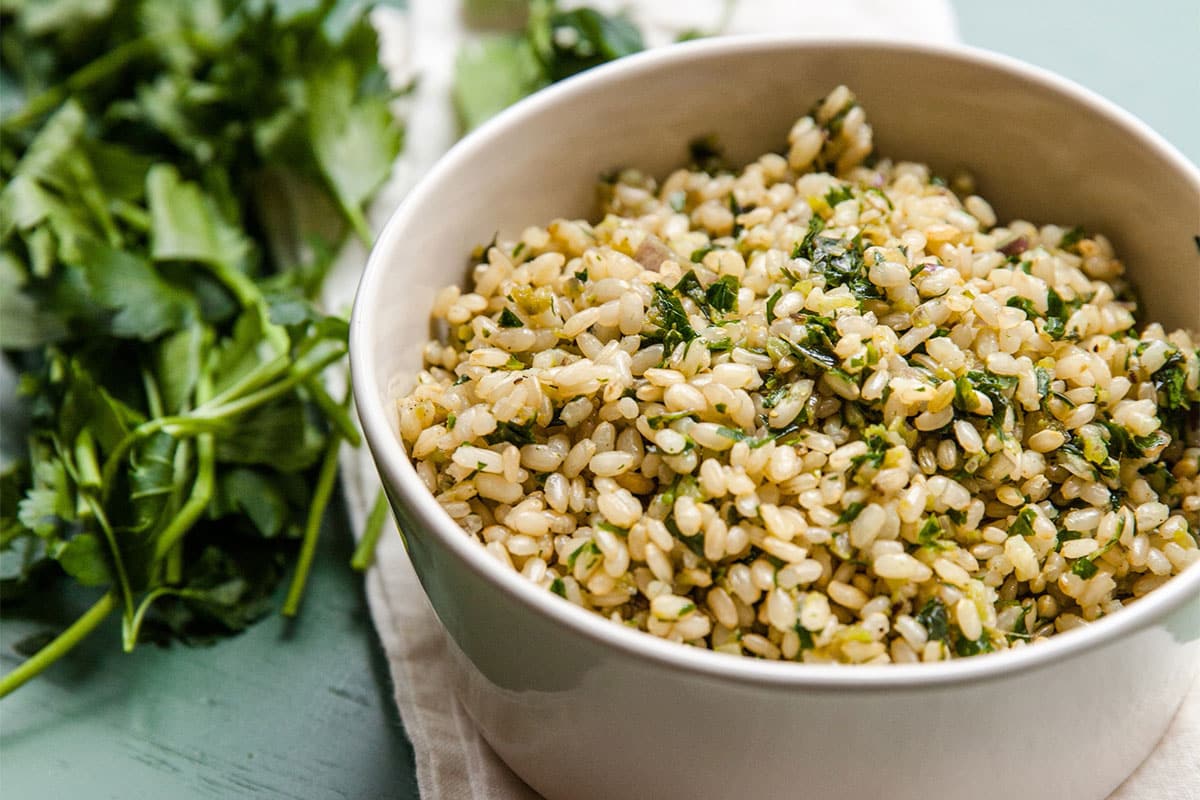
Brown Rice to Water Ratio
The perfect water-to-rice ratio for brown rice made on the stovetop is 2 1/2 cups water for 1 cup of brown rice (2.5 to 1). Too much water can make brown rice mushy, especially if you cook it too long. If your rice has become tender, and there is excess water left in the pot, drain it instead of waiting for it to absorb.
Consider cooking your rice in broth instead of water if you want to give it a boost of flavor. Use diluted or full-strength chicken broth or vegetable broth (important if you want to keep the rice vegetarian or even vegan).
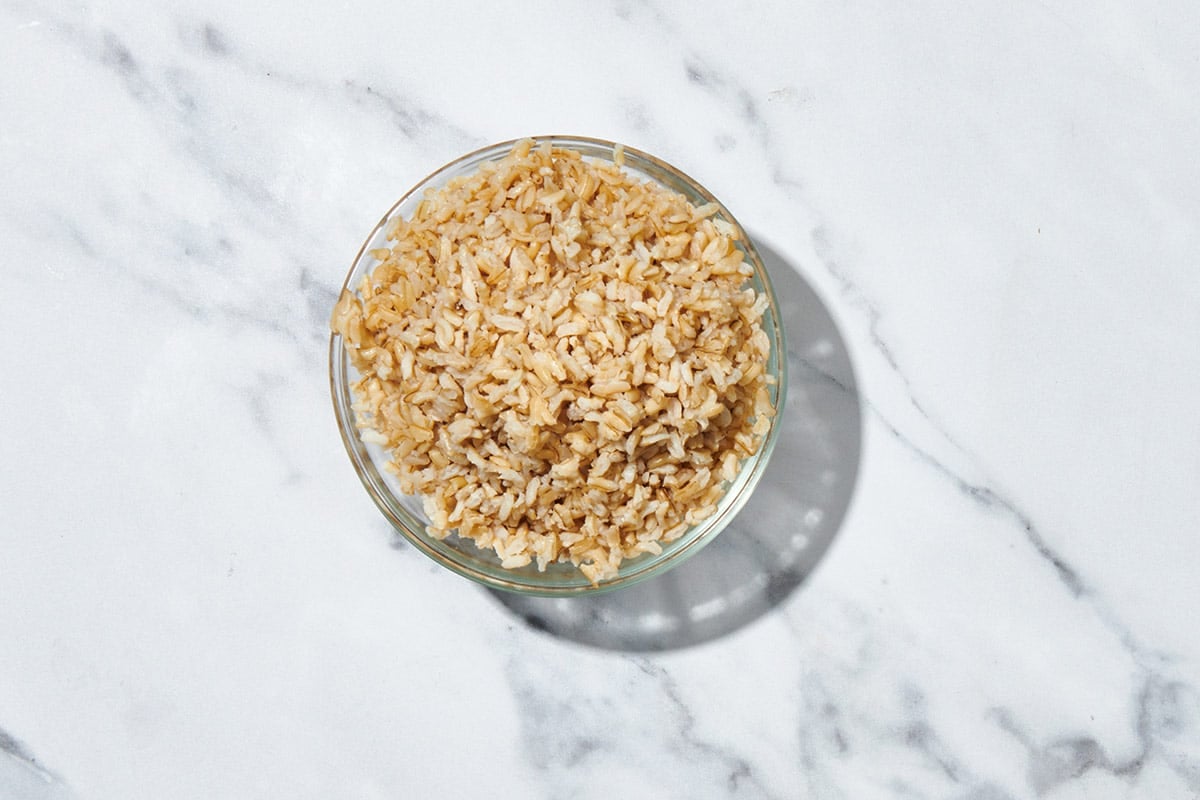
4 Things to Know About Making Sure Brown Rice is Done
When cooking brown rice, make sure the liquid is bubbling softly at a simmer, but not a full boil. Don’t lift the lid until the end of the cooking time, unless you smell the rice burning.
- Lift the lid and see if the rice is tender and the liquid has been absorbed. If so, replace the lid, remove the pan from the heat, and let it sit for 10 minutes.
- If the water is gone, but it seems like the rice isn’t quite tender, add 1/4 cup additional water or broth, return to a simmer, and let it cook for another minute or so.
- If there is just a tiny bit of liquid left and the rice is tender, just leave it while you let the rice rest, covered, for 10 minutes, and it should absorb.
- If the rice is just about tender and there is more than a few tablespoons of excess water in the pot, drain the rice, return the cooked rice to the pot, replace the lid, and let sit for 10 minutes.
And make extra brown rice for sure! Cooked brown rice is a key ingredient in vegetarian cooking, thanks to its great nutritional profile. Also, it’s a great addition to lightly bulk up a vegetarian burger, meatballs, or meatloaf. Or use it to make Kimchi Stir-Fried Rice, Shrimp Fried Rice, or Vegetable Stir-Fried Rice. Also, check out How to Reheat Leftover Rice and 10 Ways to Use Leftover Rice.
How to Make Brown Rice
- Rinse the rice in a mesh strainer.
- Combine the ingredients: Combine the rice, water, salt, and butter (if using) in a medium saucepan. Bring to a simmer, uncovered, over medium-high heat.
- Simmer: Reduce the heat so that the rice stays at a low simmer, and cover the pot. Simmer without lifting the lid for 45 minutes. Lift the lid and see if the rice is tender and the liquid has been absorbed. If so, remove the pan from the heat, leave the lid on, and let it sit for 10 minutes.
- Fluff the rice with a fork and serve.
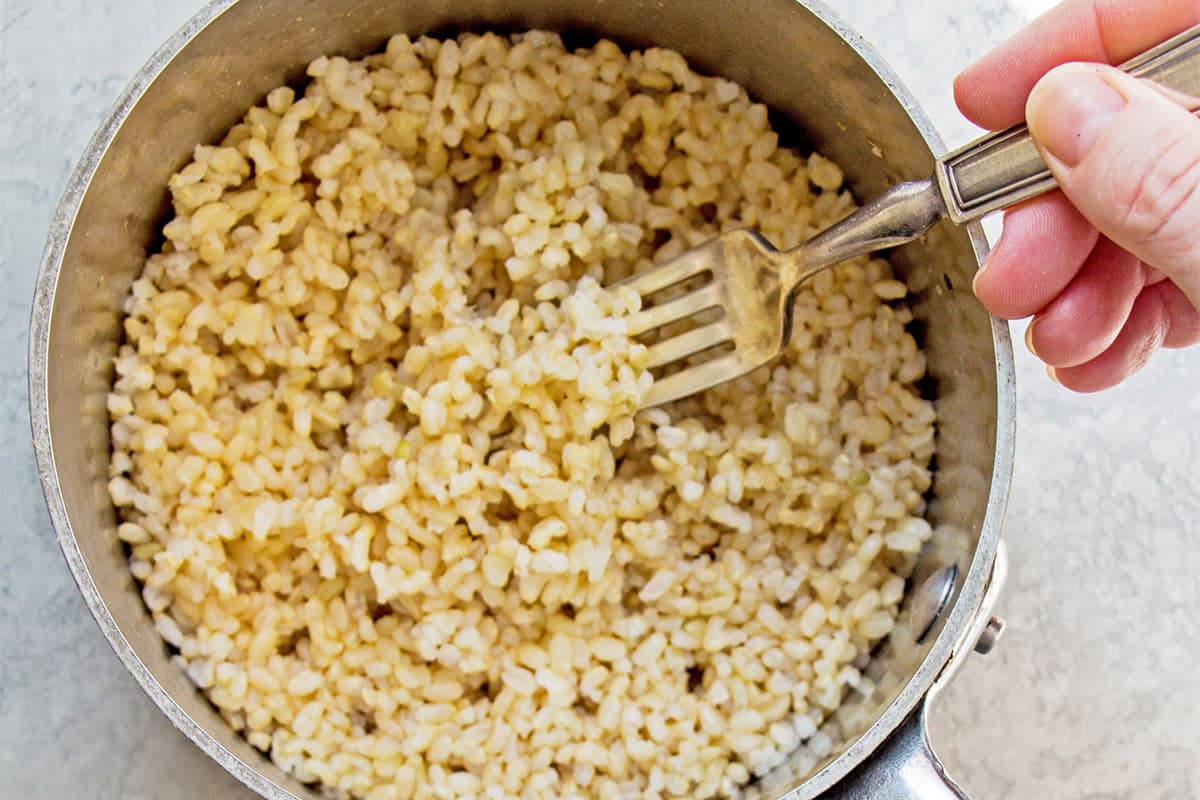
FAQs About Brown Rice
While brown rice has the outer hull removed, white rice also has the outer layer and the cereal germ removed, along with the hull. Brown rice has more fiber and nutrients than white rice.
Brown rice is just as easy to cook as white rice. It just takes longer, so you need to plan for that. But you can also make it in bigger batches and store the cooked brown rice for another meal.
It’s recommended, but not always necessary. When in doubt, rinse. This removes excess starch, which can make your rice sticky and gummy. I like to rinse it in a fine mesh strainer until the water runs clear. See if your particular brown rice package has specific instructions on this.
You should not stir brown rice while it’s cooking. If you need to lift the lid of the pot to check on the rice, do it quickly. You don’t want to let that good steam escape, as it can affect the cooking time and texture of the finished rice. It’s much better to fluff up your perfect rice after it’s done cooking!
Brown rice usually takes about 45 minutes to cook and become tender once the water or broth comes to a simmer. It then needs at least 10 minutes off the heat before fluffing and serving.
You may not have added enough water, or you may have turned up the heat too high. Don’t try to speed up the cooking of brown rice with higher heat. Brown rice will take about twice as long to cook as white rice. Higher heat won’t make the rice cook more quickly; it will just make the water evaporate faster and could cause the rice to burn.
You should also use a heavy pot with a tight-fitting lid. A heavy pot will help the heat stay more evenly distributed and cook the rice more evenly. The lid will prevent the water from evaporating; you want the steam to stay in the pot to cook the rice thoroughly and evenly.
You may have added too much water. Excess water that the rice can’t absorb may make the rice sticky, wet, or soggy, and a bit gelatinous. As soon as the rice is tender, remove it from the stove. If there is excess water, drain it and replace the lid. Let the rice sit, covered, for 10 minutes before serving to achieve that tender but chewy texture.
Pin this now to find it later
Pin It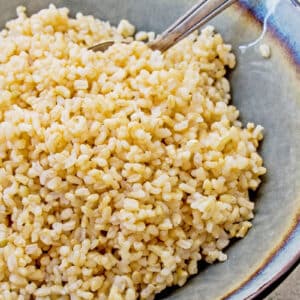
Easy Stovetop Brown Rice
Video
Ingredients
- 1 cup brown rice
- 2 ½ cups water or broth (or a mix of half and half)
- Kosher salt (to taste)
- 1 tablespoon butter (optional)
Instructions
- Rinse the rice in a mesh strainer.
- Combine the rice, water, salt, and butter (if using) in a medium saucepan and bring to a simmer, uncovered, over medium-high heat.
- Reduce the heat so that the rice stays at a low simmer, and cover the pot. Simmer without lifting the lid of the pot for 45 minutes. Lift the lid and see if the rice is tender and the liquid has been absorbed. If so, remove the pan from the heat, leave the lid on, and let it sit for 10 minutes. If not, and it seems like the rice isn’t quite tender, but the water is gone, add a few tablespoons more water or broth and let it cook for another minute or so. If there is just a tiny bit of liquid left, just leave it while you let the rice rest for 10 minutes — and it should absorb.
- Fluff the rice with a fork and serve.
Notes
Storage and Leftovers
- Always store your rice in a cool, dark, dry place. Because of the natural oils in brown rice, uncooked brown rice can go rancid more quickly than white rice. If a bag is unopened, it will have a “Best Used By” date on it. Once it’s opened, you should transfer it to an air-tight container and use it within about 4 months.
- The same applies if you bought your brown rice in bulk; use it within 4 months.
- Cooked brown rice can be stored in an airtight container in the refrigerator for up to 1 week.
- You can freeze cooked brown rice in labeled zipper-top bags. It will keep in the freezer for at least 4 months, up to 6.
- Leftover cooked rice can be reheated in the microwave or on the stovetop.
Tips
- Use a high-quality heavy pot with a tight-fitting lid. A flimsy pot with a loose lid could cause the rice to turn out underdone, and possibly scorch.
- Too much water can make brown rice mushy, especially if you cook it too long. If there is excess water left in the pot after the rice is cooked until tender, drain it off. Then let it steam in the pot, covered, for another 10 minutes.
- Pretty much every rice comes in a brown version, from short-grain to basmati. Long-grain rice or medium-grain rice is best for most preparations, including this simply cooked brown rice recipe. Short-grain rice can be stickier and is sometimes preferred for Asian rice preparations.
Nutrition
Brown Rice Nutrition
Brown rice is a whole grain. What that means is that the outer layer of the rice (the bran) is left intact, as is the germ of the rice. White rice is processed to remove the outer layer and cereal germ, and some vitamins and minerals are lost. (When you see enriched white rice, it means they were added back in.)
Brown rice, however, has more fiber than white rice as well as magnesium, folate, and some other minerals. The higher level of fiber keeps you fuller longer. Some studies, like this one from the Mayo Clinic, have shown a lot of health benefits associated with the consumption of brown rice and other whole grains. Brown rice is also rich in antioxidants such as phenols and flavonoids. These can reduce inflammation and the risk of chronic diseases.
Both white and brown rice have similar amounts of calories and carbs per cup, with brown rice being slightly higher at 44 grams of carbs per cup, according to the University of Rochester Medical Center. A cup of brown rice has 216 calories and 1.8 grams of fat.
What to Serve With Brown Rice
You can serve anything with brown rice that you would serve with white rice! Try it alongside anything from Mediterranean Pork Tenderloin with Roasted Vegetables to Baked Chicken Breasts to Thai Salmon. Think about stir-fries, chilis, fish and seafood dishes, Asian food, Mexican food, this Mongolian beef recipe, and anything that needs a simple side to soak up some sauce.
What to Make With Your Perfect Brown Rice
- Herby Brown Rice
- Brown Rice Salad
- Vegetable and Brown Rice Salad with Honey Lemon Dressing
- Grilled Pork Loin with Brown Rice Salad
- Cheesy Rice with Broccoli
- Rice Pilaf
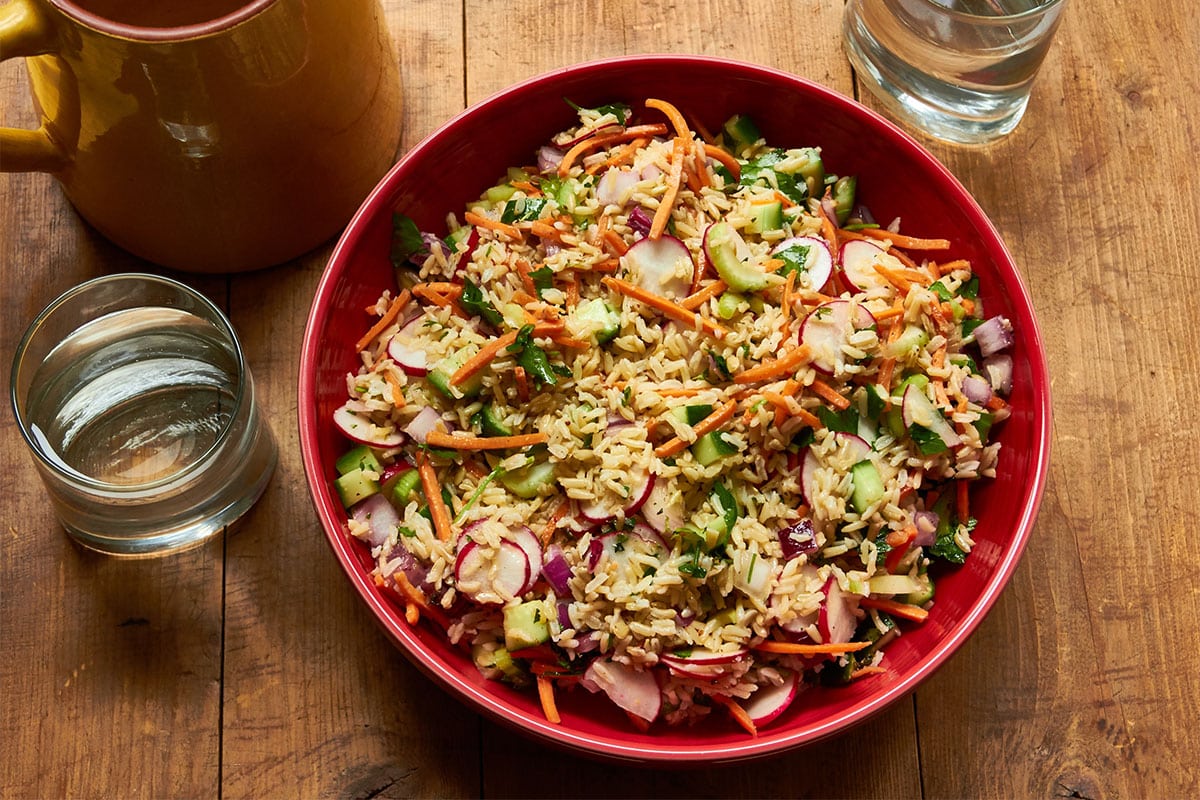
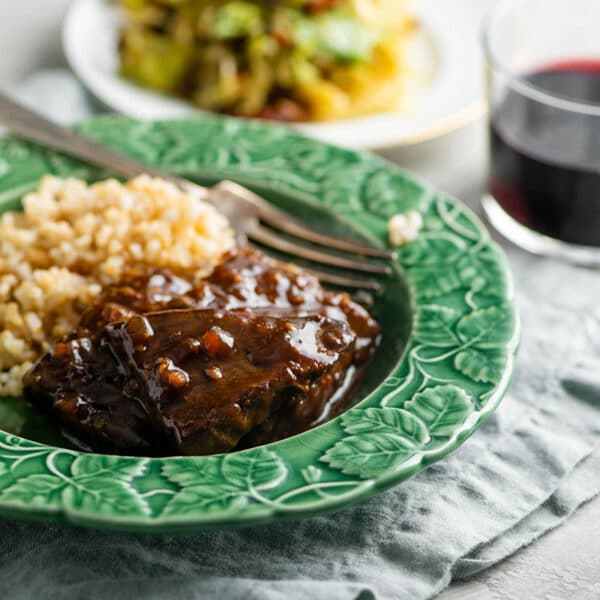
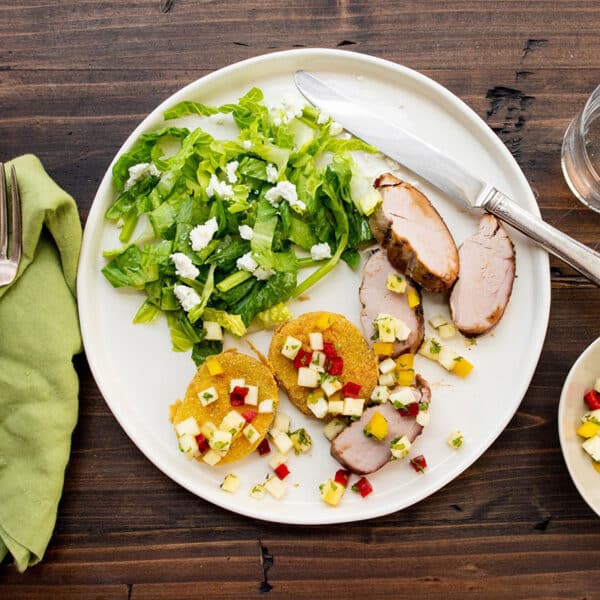
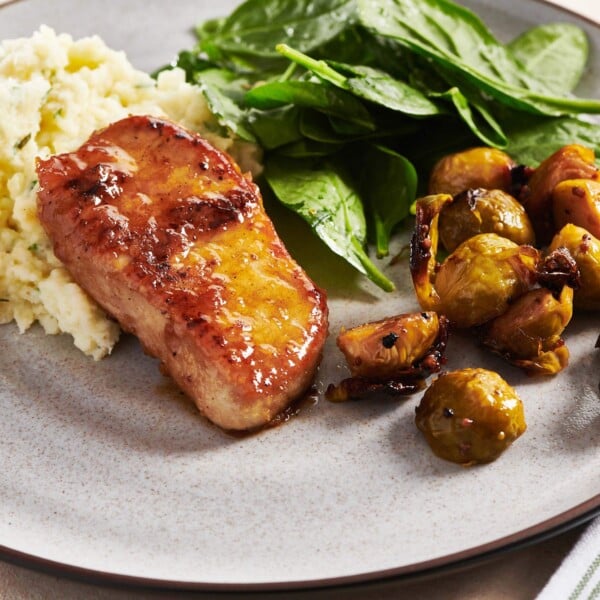
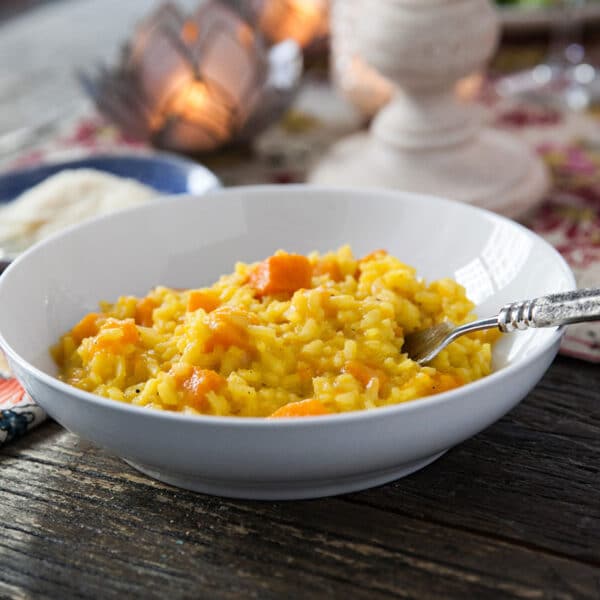
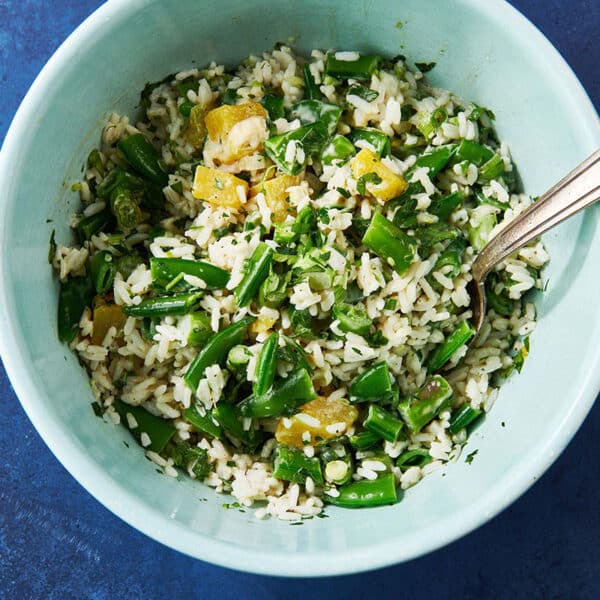
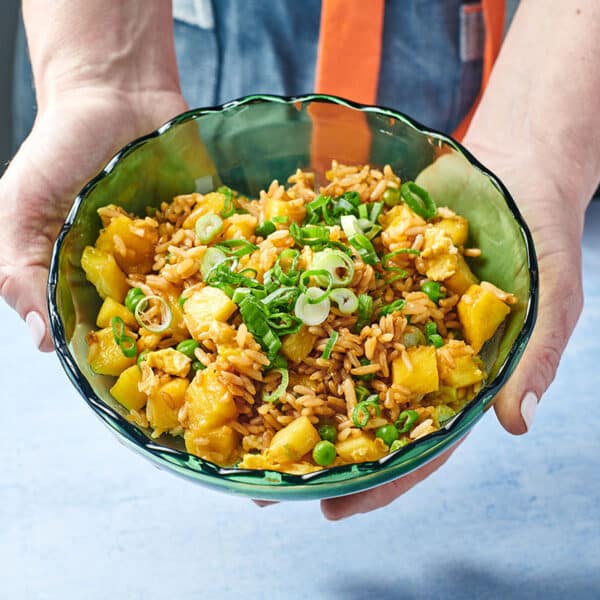
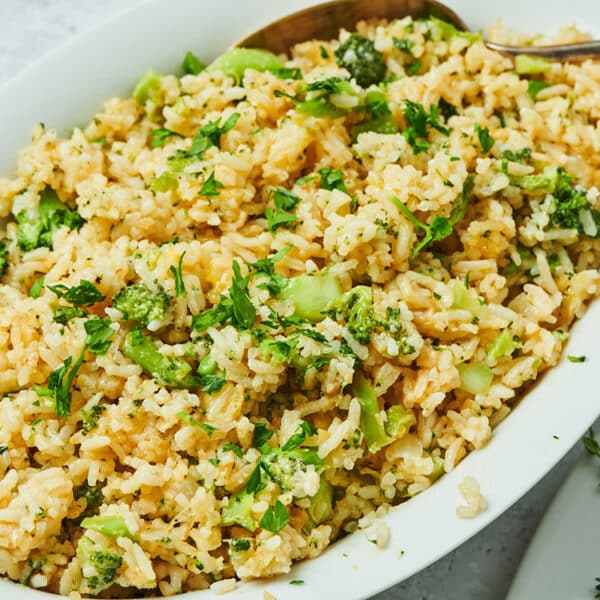









Haven’t done it yet but I’m sure it will be perfect. It’s how I do white rice. Except of course I only cook it for 20 minutes.
Thanks for the whole thing. Also looking forward to getting your newsletter.
Again thank you so much
YEESSSS, finally brown rice that isn’t a mushy and still watery mess!!!! This came out perfectly, good texture and nice flavor. Thank you so much for this recipe, I’d almost given up on cooking brown rice on the stove and just switch to a rice cooker. Also, you site looks beautiful, looking forward to trying other recipes you have :)
I am going to attempt this recipe using canned diced tomatoes as the majority of my liquid. Wish me luck!